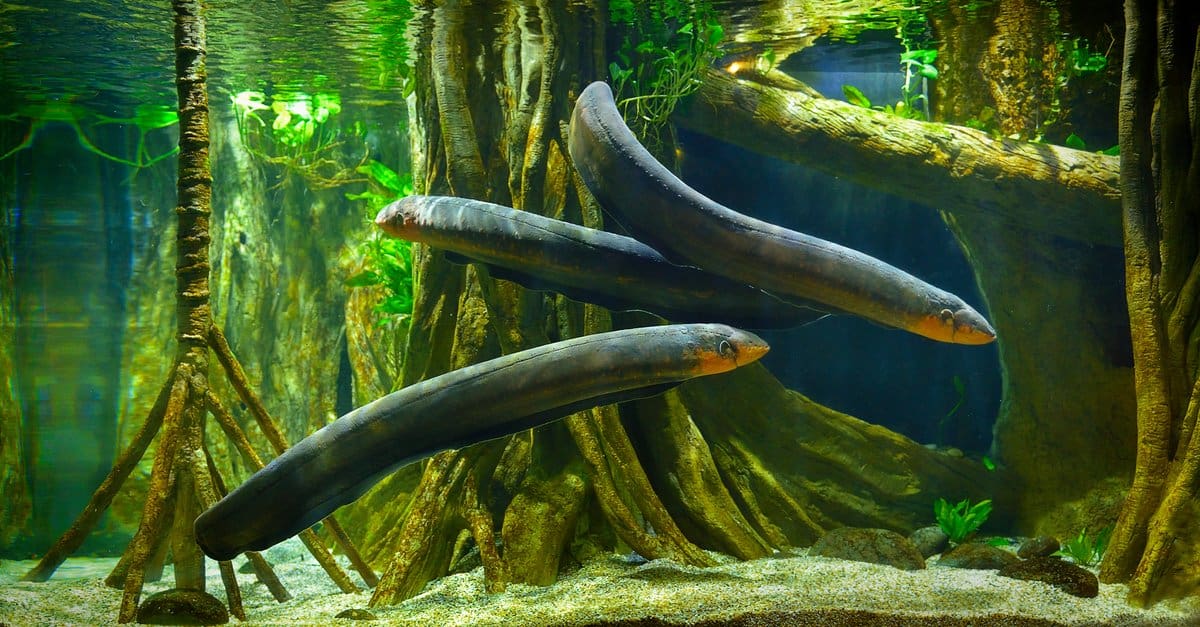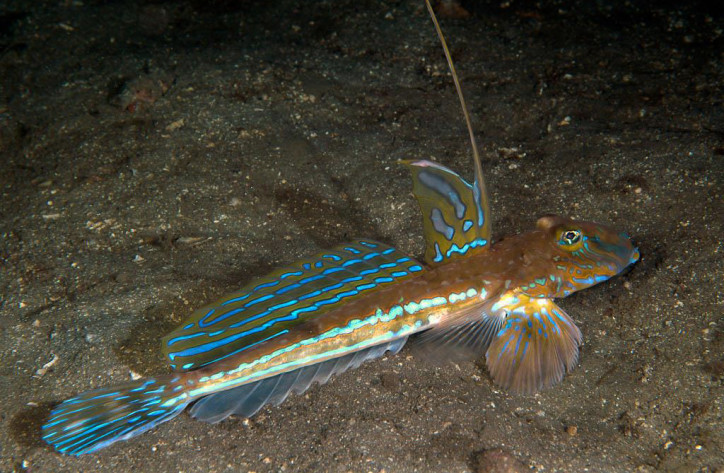Armed Aquatic Animals
Some animals are born with innate protective features, and animals use these protective shields to protect themselves from enemies when they feel they are in danger. In this article you will find about some aquatic protective armor animals,
Electric eel (Electrophorus electricus)
Electric eels have eight powerful muscular arms that they use to stun their prey. These animals are native to South America, where they live in rivers, streams, ponds, and lakes. When threatened, they extend their first pair of arms out straight in front of them while retracting their second pair behind themselves. Their body coloration varies depending on their environment. In freshwater environments, electric eels are greenish-gray. In saltwater, however, they turn reddish-orange or yellowish-brown. Electric eels have been known to attack people who approach them too closely.
Fresh water pufferfish (Takifugu rubripes)
Fresh water pufferfish also have eight powerful muscular arms. These fish are native to Japan. To protect themselves from predators, these fish can inflate their bodies using special muscles that allow them to expand their bodies up to five times their normal size!
Flying fish (Exocoetidae)
Flying fish are also called flying shrimps because of their unique swimming styles. These creatures have two pairs of wings located on each side of their bodies. There are different species of flying fish, including the swordfish, flying squid, flying bass, flying catfish, flying grouper, flying sole, flying scorpionfish, flying gar, flying angel, flying shrimp, flying angelfish, flying skate, flying mackerel, flying gurnard, flying bream, flying goby, flying codling, flying flounder, flying plaice, flying halibut, flying salmon, flying cusk, flying salmonlet, flying turbot, flying sardinella, flying pilchard, flying herring, flying shark, flying jackelope, flying perch, flying sunfish, flying ray, flying barracuda, flying porcupinefish, flying flathead, flying seahorse, flying butterflyfish, flying triggerfish, flying wrasse, flying surgeonfish, flying sea robin, flying cutthroat, flying whiptail, flying frogfish, flying moray, flying conger, flying scorpion, flying banded murex, flying unicornfish, flying lobster, flying jellyfish, flying box jellyfish, flying octopus, flying jellyfish, and flying nudibranch.
Spotted dolphin (Stenella coeruleoalba)
The spotted dolphin is a marine mammal related to the bottlenose dolphin. This particular dolphin lives along coastlines around the world, generally near beaches and estuaries. While spotted dolphins spend most of their time in shallow waters, they have been known to swim at great depths. If threatened, spotted dolphins may emit a loud grunt or squeal. Spotting dolphins have been known to engage in behaviors like breaching and spy hopping.
Stingray (Dasyatis acuta)
Stingrays have long, thin tails that give them a distinctive appearance. These marine animals have four pairs of strong, sharp tentacles attached to their tail. They are often referred to as stingrays because of the stinging cells located on their tail. Stingrays tend to prefer coastal habitats, particularly rocky shores, and feed primarily on invertebrates. Stingerrays are able to move forward rapidly, making them effective ambush predators. They are also excellent swimmers and frequently leap out of the water completely out of reach of any potential predator. They can cover distances of over 30 feet per second.
Leopard shark (Triakis semifasciata)
Leopard sharks are commonly found throughout the tropical oceans. These sharks are not actually true leopards, but do bear some resemblance to them. They are named after their characteristic spots and stripes. Like other sharks, leopard sharks have razor-sharp teeth that help them catch their prey. However, they lack the typical mouth structure used to bite down upon their prey. Instead, leopard sharks bite off chunks of their victim and then swallow the pieces whole. Due to the fact that they lack the usual jaw structure, leopard sharks cannot chew. Instead, they crush their food with their powerful jaws.
Dragonet (Callionymus lyra)
Dragonets look similar to pipefishes, but dragonets have a much larger head than a pipefish. They have a cylindrical body covered in bony plates. Their heads have no eyespots and instead have rows of tiny pits. Dragonets eat small crabs, polychaete worms, and smaller fish. They are highly territorial and often gather in schools. Dragonets are quite abundant in the Mediterranean Sea, but are endangered throughout the rest of the world.









No comments:
Post a Comment
Thanks